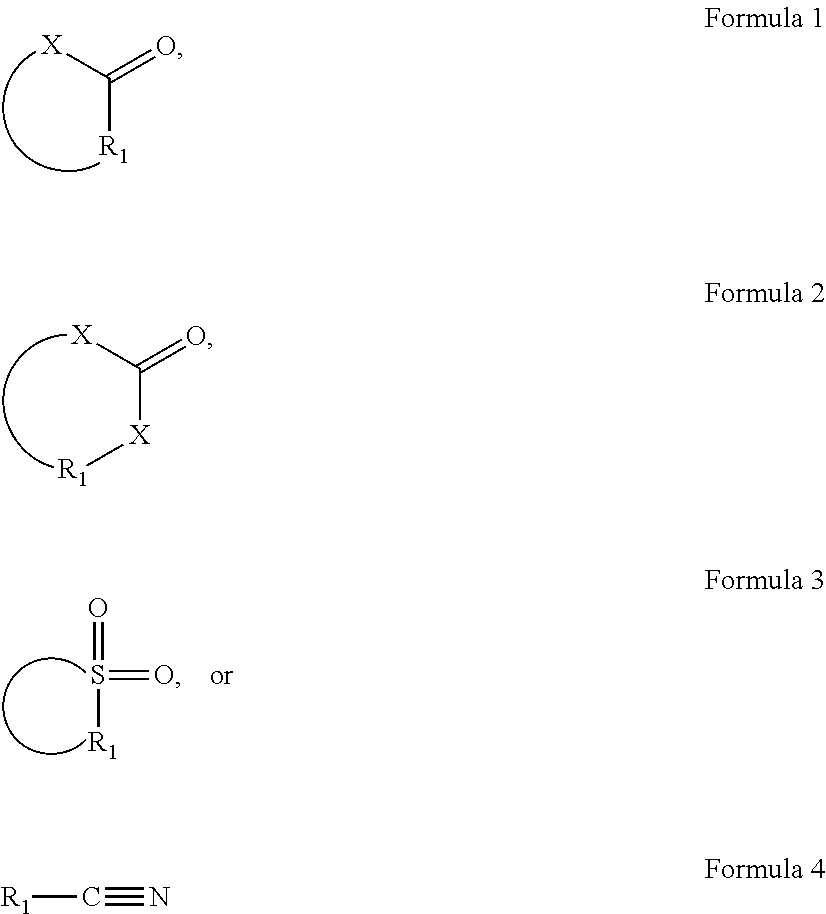Compositions and methods for performing a stringent wash step in hybridization applications
a hybridization and wash step technology, applied in the direction of microorganism testing/measurement, biochemistry apparatus and processes, etc., can solve the problems of annealing step, most time-consuming aspect of traditional hybridization applications, and significantly prolong the renaturation time, so as to reduce the background, increase specificity, and reduce the evaporation of reagents
- Summary
- Abstract
- Description
- Claims
- Application Information
AI Technical Summary
Benefits of technology
Problems solved by technology
Method used
Image
Examples
example 1
[0165]This example compares the signal intensity and cell morphology from samples treated with the compositions of the invention or traditional hybridization solutions as a function of denaturation temperature.
[0166]FISH Probe composition I: 10% dextran sulfate, 300 mM NaCl, 5 mM phosphate buffer, 40% formamide (15515-026, Invitrogen), 5 μM blocking PNAs (see Kirsten Vang Nielsen et al., PNA Suppression Method Combined with Fluorescence In Situ Hybridisation (FISH) Technique in PRINS and PNA Technologies in Chromosomal Investigation, Chapter 10 (Franck Pellestor ed.) (Nova Science Publishers, Inc. 2006)), 10 ng / μL Texas Red labeled CCND1 gene DNA probe (RP11-1143E20, size 192 kb).
[0167]FISH Probe composition II: 10% dextran sulfate, 300 mM NaCl, 5 mM phosphate buffer, 40% Ethylene carbonate (03519, Fluka), 5 μM blocking PNAs, 10 ng / μL Texas Red labeled CCND1 gene DNA probe (RP11-1143E20, size 192 kb).
[0168]Phases of different viscosity, if present, were mixed before use. The FISH pr...
example 2
[0170]This example compares the signal intensity and background staining from samples treated with the compositions of the invention or traditional hybridization solutions as a function of hybridization time.
[0171]FISH Probe composition I: 10% dextran sulfate, 300 mM NaCl, 5 mM phosphate buffer, 40% formamide, 5 μM blocking PNAs, 10 ng / μL Texas Red labeled CCND1 gene DNA probe.
[0172]FISH Probe composition II: 10% dextran sulfate, 300 mM NaCl, 5 mM phosphate buffer, 40% Ethylene carbonate, 5 μM blocking PNAs, 10 ng / μL Texas Red labeled CCND1 gene DNA probe.
[0173]Phases of different viscosity, if present, were mixed before use. The FISH probes were incubated at 82° C. for 5 min and then at 45° C. for 14 hours, 4 hours, 2 hours, 60 minutes, 30 minutes, 15 minutes, 0 minutes.
[0174]Results:
SignalHybridization(I)(II)Background stainingtimeFormamideECFormamideEC14 hours33+½+2 4 hours13+½+1 2 hours½3+0+160 min.½3+0+130 min.02½+0+115 min.02+0+1 0 min.01+0+½Signals scored as “3” were clearly ...
example 3
[0175]This example compares the signal intensity from samples treated with the compositions of the invention having different polar aprotic solvents or traditional hybridization solutions.
[0176]FISH Probe composition I: 10% dextran sulfate, 300 mM NaCl, 5 mM phosphate buffer, 40% formamide, 5 μM blocking PNAs, 10 ng / μL Texas Red labeled CCND1 gene DNA probe.
[0177]FISH Probe composition II: 10% dextran sulfate, 300 mM NaCl, 5 mM phosphate buffer, 40% Ethylene carbonate (EC), 5 μM blocking PNAs, 10 ng / μL Texas Red labeled CCND1 gene DNA probe.
[0178]FISH Probe composition III: 10% dextran sulfate, 300 mM NaCl, 5 mM phosphate buffer, 40% Propylene carbonate (PC) (540013, Aldrich), 5 μM blocking PNAs, 10 ng / μL Texas Red labeled CCND1 gene DNA probe.
[0179]FISH Probe composition IV: 10% dextran sulfate, 300 mM NaCl, 5 mM phosphate buffer, 40% Sulfolane (SL) (T22209, Aldrich), 5 μM blocking PNAs, 10 ng / μL Texas Red labeled CCND1 gene DNA probe.
[0180]FISH Probe composition V: 10% dextran sul...
PUM
| Property | Measurement | Unit |
|---|---|---|
| temperature | aaaaa | aaaaa |
| temperature | aaaaa | aaaaa |
| temperature | aaaaa | aaaaa |
Abstract
Description
Claims
Application Information
 Login to View More
Login to View More - R&D
- Intellectual Property
- Life Sciences
- Materials
- Tech Scout
- Unparalleled Data Quality
- Higher Quality Content
- 60% Fewer Hallucinations
Browse by: Latest US Patents, China's latest patents, Technical Efficacy Thesaurus, Application Domain, Technology Topic, Popular Technical Reports.
© 2025 PatSnap. All rights reserved.Legal|Privacy policy|Modern Slavery Act Transparency Statement|Sitemap|About US| Contact US: help@patsnap.com



